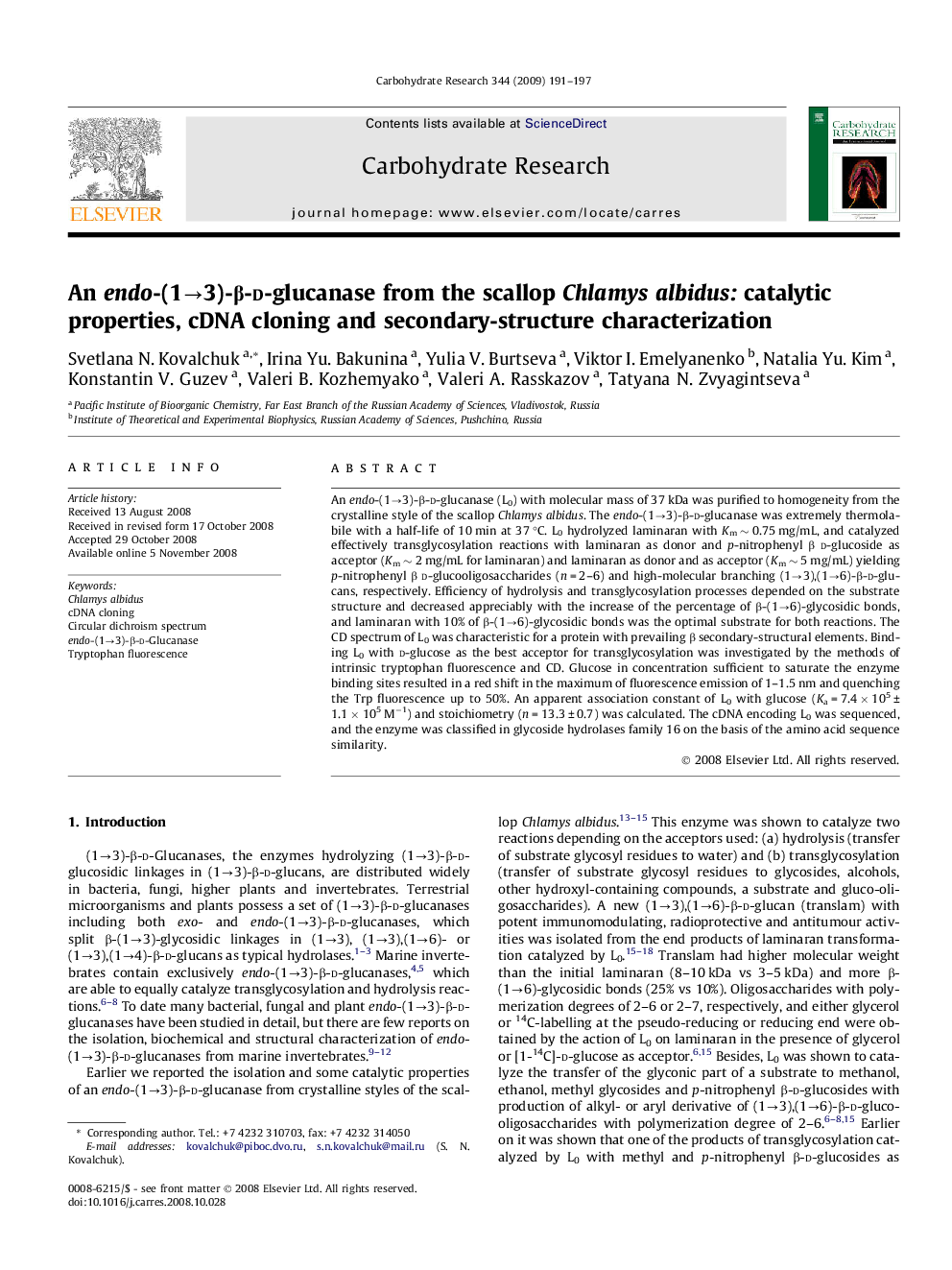| کد مقاله | کد نشریه | سال انتشار | مقاله انگلیسی | نسخه تمام متن |
|---|---|---|---|---|
| 1388939 | 982831 | 2009 | 7 صفحه PDF | دانلود رایگان |

An endo-(1→3)-β-d-glucanase (L0) with molecular mass of 37 kDa was purified to homogeneity from the crystalline style of the scallop Chlamys albidus. The endo-(1→3)-β-d-glucanase was extremely thermolabile with a half-life of 10 min at 37 °C. L0 hydrolyzed laminaran with Km ∼ 0.75 mg/mL, and catalyzed effectively transglycosylation reactions with laminaran as donor and p-nitrophenyl βd-glucoside as acceptor (Km ∼ 2 mg/mL for laminaran) and laminaran as donor and as acceptor (Km ∼ 5 mg/mL) yielding p-nitrophenyl βd-glucooligosaccharides (n = 2–6) and high-molecular branching (1→3),(1→6)-β-d-glucans, respectively. Efficiency of hydrolysis and transglycosylation processes depended on the substrate structure and decreased appreciably with the increase of the percentage of β-(1→6)-glycosidic bonds, and laminaran with 10% of β-(1→6)-glycosidic bonds was the optimal substrate for both reactions. The CD spectrum of L0 was characteristic for a protein with prevailing β secondary-structural elements. Binding L0 with d-glucose as the best acceptor for transglycosylation was investigated by the methods of intrinsic tryptophan fluorescence and CD. Glucose in concentration sufficient to saturate the enzyme binding sites resulted in a red shift in the maximum of fluorescence emission of 1–1.5 nm and quenching the Trp fluorescence up to 50%. An apparent association constant of L0 with glucose (Ka = 7.4 × 105 ± 1.1 × 105 M−1) and stoichiometry (n = 13.3 ± 0.7) was calculated. The cDNA encoding L0 was sequenced, and the enzyme was classified in glycoside hydrolases family 16 on the basis of the amino acid sequence similarity.
Figure optionsDownload as PowerPoint slide
Journal: Carbohydrate Research - Volume 344, Issue 2, 26 January 2009, Pages 191–197